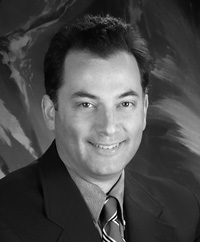It’s travel baseball season again, which brings with it pressing concerns for our 14-and-under squad.
Among them: Do the TomCats have enough pitching? How can you get a group of passive boys to be more overtly enthusiastic? Are said boys going to give our head coach a heart attack the next time things go awry?
But those questions are specific to what happens between the chalk baselines.
One issue that’s relevant to players and spectators alike, however, is emerging from a weekend’s worth of games with our skin mostly unharmed by the sun’s ultraviolet rays.
Shade is hard to come by at most fields, where sometimes it’s seemingly just sunscreen and a ball cap standing between me and spontaneous combustion.
It would be a funny if it weren’t potentially so deadly: Sun exposure is the biggest cause of skin cancer. At the very least, sun and heat can make dehydration a serious problem, especially for young and elderly spectators.
Some families are more ambitious than others when it comes to creating shade, erecting canopies with telescoping metal legs and nylon covers. You’ll see sports shelters that look like tents but with one open side. There’s a product called JoeShade, marketed as a portable sports umbrella, although I think I’ve only seen it online.
Exposure during childhood
But these are temporary fixes. We need real solutions, which is why I was intrigued by a report called “Shade Planning for America’s Schools.” I’m not sure when it came out, but it was subsequent to a 2002 Centers for Disease Control report, “Guidelines For School Programs to Prevent Skin Cancer.”
From the latter:
“More than one half of a person’s lifetime UV exposure occurs during childhood and adolescence because of more opportunities and time for exposure. Exposure to UV radiation during childhood plays a role in the future development of skin cancer.”
Hence, the focus on schools, where children are exposed to UV rays at recess, in physical education classes, during sporting events and other extracurricular activities, often without the benefit of sunscreen. The shade planning report proposes three strategies: solid roof structures, shade cloth structures, and natural shade (trees).
The TomCats and other tournament participants are fortunate to have use of school fields, including Milton Hershey School in Hershey and Northside Elementary School and Palmyra High School in Palmyra, but shade is hard to find outside of player dugouts (Northside only has benches). The same was true when Jack played in Hershey Little League, on the North and South fields owned by Derry Township School District.
Outdoor learning areas
While cancer risk should be reason enough to consider ways of creating shade, doing so also could be a catalyst to realizing other dividends.
At the Hershey fields, the concession stand is a trailer. The toilets are portable. And although there are player dugouts, spectators bake in the sun because the trees are relatively young.
One solution would be to build a permanent structure, complete with a concession stand, restrooms, and a covered patio with picnic tables. (The lack of such facilities, as I understand it, has prevented Hershey Little League from hosting district playoffs.)
There is a considerable cost to do a project of this magnitude, but let’s think grandly. What else could a covered structure be used for?
“Structures built to provide shade can also be designed as covered outdoor learning areas, thereby extending the classroom beyond the school walls,” it is suggested in “Shade Planning for America’s Schools.”
The report cites an example in Duluth, Minn., where a rotary club built an open-air structure with four posts, a roof and a concrete floor. It is behind an elementary school and serves as an outdoor classroom and is accessible to students during recess.
Perhaps a structure in Hershey also could incorporate solar panels, rain barrels, composting, which would be valuable as teaching tools and would make the facility self-sustaining.
Cooling tree canopies
Of course, the need for shade casts its shadow far beyond our schools into many places we go in our daily lives.
A 2008 story in “Columns,” the University of Washington alumni magazine, noted that America’s largest cities have lost more than one-quarter of their tree canopies since 1972.
“Urban forests provide many obvious benefits. When rains inundate cities … trees and green spaces help reduce stormwater runoff. One study found that the canopy of a single, leafy, 38-foot-tall tree intercepts and holds rainwater, reducing runoff by 290 gallons.
“Urban tree canopies and green spaces also remove pollutants from air and water, soak up the greenhouse gas carbon dioxide and provide cooling shade for concrete-laden cityscapes. Scientists estimate that a mature tree canopy in a city center, for example, reduces air temperatures up to 10 [degrees Fahrenheit] and can even influence indoor temperatures of nearby buildings.”
Surely a mature tree can have a similar effect at a baseball field, for spectators, for players, and for a sometimes overheated coach.




